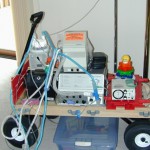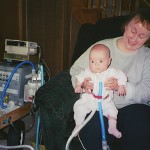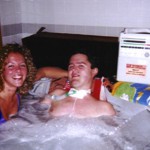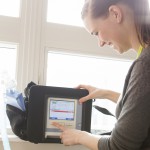25 years of Ventilator Technology
 Roy C. Maynard, M.D., is the Medical Director for PHS. He serves as PHS’s clinical leader, working with the team to provide consultation and advice to ensure quality and effective care to children and their families in their own homes. He also leads implementation of clinical policies, procedures and programs to further enhance the best possible care for each child. He is a Neonatologist and Pediatric Pulmonologist, and serves as a staff physician at Children’s Hospitals and Clinics in Minneapolis, Minn.
Roy C. Maynard, M.D., is the Medical Director for PHS. He serves as PHS’s clinical leader, working with the team to provide consultation and advice to ensure quality and effective care to children and their families in their own homes. He also leads implementation of clinical policies, procedures and programs to further enhance the best possible care for each child. He is a Neonatologist and Pediatric Pulmonologist, and serves as a staff physician at Children’s Hospitals and Clinics in Minneapolis, Minn.
 Adapting hospital ventilators designed for infants is where it all started 25 years ago when PHS first opened its doors as Pediatric Home Respiratory Service.
Adapting hospital ventilators designed for infants is where it all started 25 years ago when PHS first opened its doors as Pediatric Home Respiratory Service.
Early infant ventilators were pressure-limited and time-cycled, there was no synchrony with the patient’s intrinsic respiratory rate, and often the ventilator’s breath rate was set to best match the patient’s respiratory rate. A bias flow in the ventilator circuit made for easier breathing for infants in between the preset ventilator breaths.
The equipment was somewhat cumbersome and designed to work with high pressure air and oxygen systems piped into hospital intensive care units, making transitions home more difficult.
Meeting Pediatric Vent Needs
 To properly function in a home environment, large cylinders with compressed air and oxygen were brought into the home to operate this early generation of infant ventilators, demanding that respiratory therapists with PHS and families would need to configure the home to fit equipment needs. As the need arose, infant hospital ventilators that could recognize a patient’s respiratory effort and simultaneously deliver a breath were developed. As new modes of ventilator support became available, they included assist control, synchronized intermittent mandatory ventilation, and pressure support.
To properly function in a home environment, large cylinders with compressed air and oxygen were brought into the home to operate this early generation of infant ventilators, demanding that respiratory therapists with PHS and families would need to configure the home to fit equipment needs. As the need arose, infant hospital ventilators that could recognize a patient’s respiratory effort and simultaneously deliver a breath were developed. As new modes of ventilator support became available, they included assist control, synchronized intermittent mandatory ventilation, and pressure support.
 These advances in ventilator technology were adapted into home ventilators, and turbines within ventilators became smaller and generated the compressed air and flow needed to support the patient and contributed to portability.
These advances in ventilator technology were adapted into home ventilators, and turbines within ventilators became smaller and generated the compressed air and flow needed to support the patient and contributed to portability.
Additionally, new battery technology allows patients to attend a school day without the need to plug their ventilator into a wall socket – innovation that has given ventilator-dependent patients a higher level of independence.
Continually Improving for Home Use
 Current state of the art infant ventilators approved for home care may weigh as little as 8 to 11 pounds. Pediatric Home Service prides itself in having been at the forefront of pediatric home ventilator indoctrination, and continues to integrate the latest in home care technologies when taking care of the child.
Current state of the art infant ventilators approved for home care may weigh as little as 8 to 11 pounds. Pediatric Home Service prides itself in having been at the forefront of pediatric home ventilator indoctrination, and continues to integrate the latest in home care technologies when taking care of the child.


